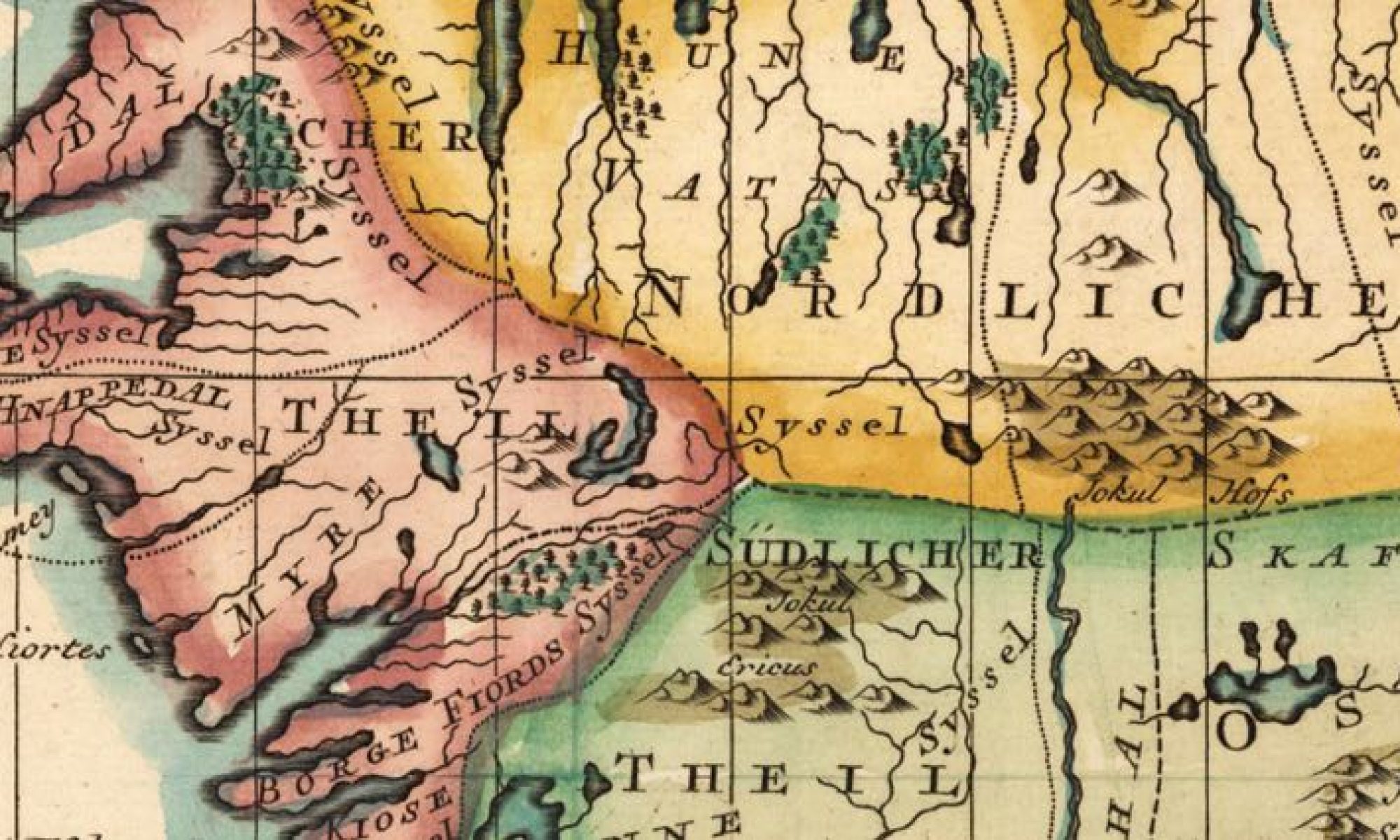Maria drove the Durango across the rocky Icelandic plain toward the mountain in the distance. She inspected it through her windshield as she approached. It wasn’t especially large, but its top was unusually flat, and it jutted out from the middle of the valley. Despite traveling all over the United States, she had never seen a formation quite like it. When she jumped down from the driver’s seat and scanned the horizon, she realized she was the only person around for miles. The feeling brought her fear and solitude, all at once.
She began walking toward the mountain. As she got closer to the base, she noticed the increasing size of the sediment under her feet. She wondered why the rocks were sorted in this way. She knew that sediment in streams would be deposited based on weight, since the water could only carry rocks of certain sizes so far, but there was no water-source anywhere in sight. She wandered a little farther towards the mountain and sat down on a large rock to take in the view.
She pulled her water bottle and her guide book from her backpack. As she turned to the page diagramming the area, she took a gulp of water, its smoothness refreshing and icy.
Ice. She imagines it everywhere. Cold white sheets spanned almost endlessly over the myriad of rocks. Around that time, in this very spot, a dike appeared—a crack in the earth, born from shifting plates in an unstable terrain. Over the course of several years, lava would pour from this dike, a hot, nagging splinter under the frigid canvas of ice.
Slowly, the ice relents, melting away at the barrage of lava. Birthed from fire and ice, water rushes over the rocks, carving, grinding, eroding them. Under the weakening glacier, the lava begins to prosper, bulbous pillow basalts melting and mingling and hardening into each other. These basalts are unstable, and the pressure exerted by the lava under them breaches them, flowing out, melting the ice, and hardening into more pillow basalts.
Like a festering wound in the earth, the oozing lava gushes and hardens, building on its foundation of pillow basalts, eating away at the ice, clawing its way towards the surface. From there, it goes one of two ways. Perhaps the ice melted gracefully, giving way to rising lava, or perhaps the pressure reached a crescendo and the lava burst through the ice. In either outcome, however, the lava flows over the ice, and the two-pronged assault of heat melts it faster.
From the breach in the ice emerges a foundation, liquid at first, but solid with the passage of time. The ice between the lava melts, allowing the upper and lower flows to join and solidify. When the glacier’s time passes, this new formation, a tuya, stands tall amongst a sea of fine grains, carved by the waters its predecessor let flow.
She sat there on that tuya for about an hour. It was hard to believe that she was sitting at the epicenter of such a dramatic geological event. The barren landscape around her had adopted a more storied quality, the smoothness of the sediment below like wrinkles on the face of the earth. It was a strange feeling to stand in the aftermath of such an upheaval, but strangely humbling. As she made her way down the mountain, she wondered what else was in store for her, what majesty this land would provide in her next several stops.
